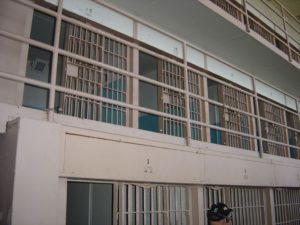
Ivory Toldson, Ph.D., tells TruthBeTold.news that the “number of black males in college actually increased, and the number of black men in prison decreased.”
Many people consider it common knowledge that more black men are in prison than in college. “A third more African-American men are incarcerated than in higher education,” according to Jason Ziedenberg and Vincent Schiraldi, who wrote the 2002 report from the Justice Policy Institute, “Cellblocks or Classrooms: The Funding of Higher Education and Corrections and Its Impact on African-American Men.”
President Barack Obama kept the statement rolling during a speech at the 2007 NAACP convention. “We have more work to do when more young black men languish in prison than attend colleges and universities across America,” Obama said.
More recently, Ben Carson mentioned it during his campaign to become the Republican nominee for president. “Many have said the young black male in America is an endangered species. Why do they say that?” Carson asked during a speech in Milwaukee on April 22, 2015, “because of the high homicide rate, particularly in our large, inner cities; because there are more young black males involved in the criminal justice system than there are in higher education.”
If a national report and even the president of the United States say that more black men are in prison than in college, is the statement true?
No, said Ivory A. Toldson, Ph.D., an education professor at Howard University and analyst for the Congressional Black Caucus Foundation. It’s a myth. In fact, the “number of black males in college actually increased, and the number of black men in prison decreased,” Toldson said in an interview with TruthBeTold.news.
The “Cell Blocks Versus Classroom” report by the Justice Policy Institute, which spearheaded this myth, was incomplete and incorrect, explained Toldson, editor-in-chief of The Journal of Negro Education and former executive director for the White House Initiative on Historically Black Colleges and Universities under President Obama.
When the report was issued, it was already 13 years outdated, Toldson said in a 2013 article for New America Media. “I pulled the data from 2001 that the Justice Policy Institute used, and I noticed that at least 1,000 colleges weren’t reporting their head count of black males then,” he said. “And I also noticed that a lot of colleges that didn’t report any numbers, when the Justice Policy Institute wrote their report, were historically black universities.”
According to the 2010 U.S Census, 18.5 million people in the United States are black males. In 2013, 745,000 black males were in jail and prisons, according to the National Center for Educational Statistics. In 2015, this number rose to 840,000. This compares to the 1.44 million black males in college in 2011 as reported by the Integrated Postsecondary Education Data System.
Many of the “misleading” statistics “are being used by people who do not have the interest of young black men in mind,” Toldson went on to say in the TruthBeTold.news interview.
In addition, Toldson stated that during his tenure as a correction and forensic psychology resident at a U.S. penitentiary, he learned that the war on drugs was a huge contributor to black men being incarcerated.
“A lot of black males who had larger sentences were actually non-violent drug offenses … and sometimes they could get a lot more time than someone who was a murderer or rapist,” Toldson said.
Filmmaker Ava DuVernay (“Selma,” “Queen Sugar”) also examined this issue in the new Netflix documentary “The 13th Amendment.” The documentary explains that the 13th amendment makes it unconstitutional for someone to be held as a slave. However, some experts said a loophole was being exploited that put a disproportionate number of black people behind bars.
They claimed that the media and politicians “criminalized” black people, citing then Senator Hillary Clinton’s use of the term “super-predators” in 1996 and President Bill Clinton’s support of the “Three Strikes” law — both of which became issues in the recent presidential campaign. The Three Strikes” provision meant that anyone convicted of a serious violent crime who had two prior felony convictions (including drug crimes) would most likely receive a life sentence.
“The 13th Amendment” also examined the implementation of mandatory minimum sentences. The experts claimed the practice was inequitable with drug dealers and buyers within the black communities receiving mandatory minimum sentences of five years for 28 grams of crack cocaine, while white people possessing the same amount of powdered cocaine received lesser or no sentences.
Truth Be Told
The misconception about more black men being in prison versus college has grown to have many believe that it is true — partly because of inaccurate research on this topic, changes in sentencing and the overall growth in incarceration over the years.
However, increasing numbers of black and Hispanic students are attending college, according to the National Center for Education Statistics. “Between 2000 and 2014, the percentage of college students who were black rose from 11.7 to 14.5 percent, and the percentage of students who were Hispanic rose from 9.9 to 16.5 percent.”
“If we replicated JPI’s analysis by downloading enrollment data from the National Center for Education Statistics’ Integrated Post‐Secondary Education Data System (IPEDS),” Toldson says, “we would find a 108.5 percent jump in black male college enrollment from 2001 to 2011.”
So not only is it a fact that more black men are in college than in prison, but it is also a fact that more black people, men and women, are in college than in previous years.


